© 2025 Qualitetch Ltd. Site by i3MEDIA
Your total metal component manufacturing solution
Brass is a metal alloy consisting of copper and zinc, with differing variations of the metal made by changing the proportion of the two elements.
Due to its gold or bronzed appearance, Brass is a popular metal to use in aesthetic or creative art projects, but also used for many modern practical engineering applications such as, EMI RFI or EMC screening cans through to various musical instruments components.
Through our Photo Chemical Etching process, we are able to etch brass for a range of different uses. The metal will remain burr and stress-free, retaining all of its properties, after undergoing the our etching process and can be finished with various plating or coatings if required.
Photo etching, also known as chemical etching or machining is a versatile and precise manufacturing technique that finds extensive use, in creating intricate metal components. Among the materials available for this process, brass, a copper zinc alloy known for its durability, malleability and resistance to corrosion stands out as a choice. Through the utilization of solutions and selective material removal from a brass sheet, detailed and complex patterns can be achieved. Lets take a look at the process of brass photo etching and explore its advantages.
The Brass Photo Etching Process;
Design Preparation;
This technique commences with the creation of a design or artwork that represents the desired end product. Subsequently this design is transferred onto a photoresist material applied to the brass sheet.
Exposure;
Once the brass sheet has been coated with the photoresist material it is subjected to UV light either through a mask or using an image. This exposure prompts areas to undergo changes that render them either more or less soluble, during subsequent development steps.
Development;
Following exposure, the brass sheet undergoes development wherein unexposed photoresist is removed. Consequently what remains on the brass surface forms a pattern corresponding to desired etched areas.
Etching;
The next step involves immersing the brass sheet into a solution typically consisting of an acidic mixture.
The chemical reaction used in brass photo etching selectively removes areas of the brass resulting in the desired pattern or component. This process allows for control of the etching depth enabling the production of finely detailed designs.
After completing the etching procedure the remaining photoresist is. Thorough cleaning is performed on the brass sheet. Additional finishing techniques such, as deburring or polishing may be applied to achieve the desired surface quality.
Benefits of Brass Photo Etching;
1.Precision and Accuracy;
Brass photo etching excels in reproducing designs with precision and accuracy. The process enables the creation of details, complex geometries and tight tolerances that would otherwise be challenging to achieve through machining methods.
2.Cost Effective for Prototyping and Small Production Runs;
Photo etching offers a cost solution for small production runs. The setup costs are low and multiple designs can be produced simultaneously on a sheet minimizing material waste.
3.Material Conservation;
Unlike machining methods that involve cutting away material photo etching conserves material through its subtractive process. This makes it a friendly choice, especially when working with metals, like brass.
4.Burr Free and Stress Free Results;
The etching process used in brass production ensures that components are free, from burrs and stress. This is especially crucial for parts or those that require tolerances because no mechanical force is applied during the process.
One of the advantages of brass photo etching is its versatility in creating intricate designs effortlessly. This adaptability makes it suitable for a range of applications, including electronics, aerospace, medical devices and decorative items.
To summarize the brass photo etching process combines precision, cost effectiveness and versatility making it an excellent choice for manufacturing high quality components with designs. Its ability to handle production runs and create features establishes it as a valuable manufacturing technique, across various industries.
Our assembly line approach reduces manufacturing time and allows us to save time by cutting unnecessary steps out of the manufacturing process.
We have a dedicated team of fully qualified professionals who are on hand to deal with and complete assembly work requests from our customers.
We offer assembly, soldering and spot welding, bespoke packaging, and also many other specialist bespoke customer requirements that our clients may have.
The photo etching process produces metal components that are both stress-free and burr-free compared to more traditional manufacturing methods – ensuring that your end product is as both accurate and precise to your drawings.
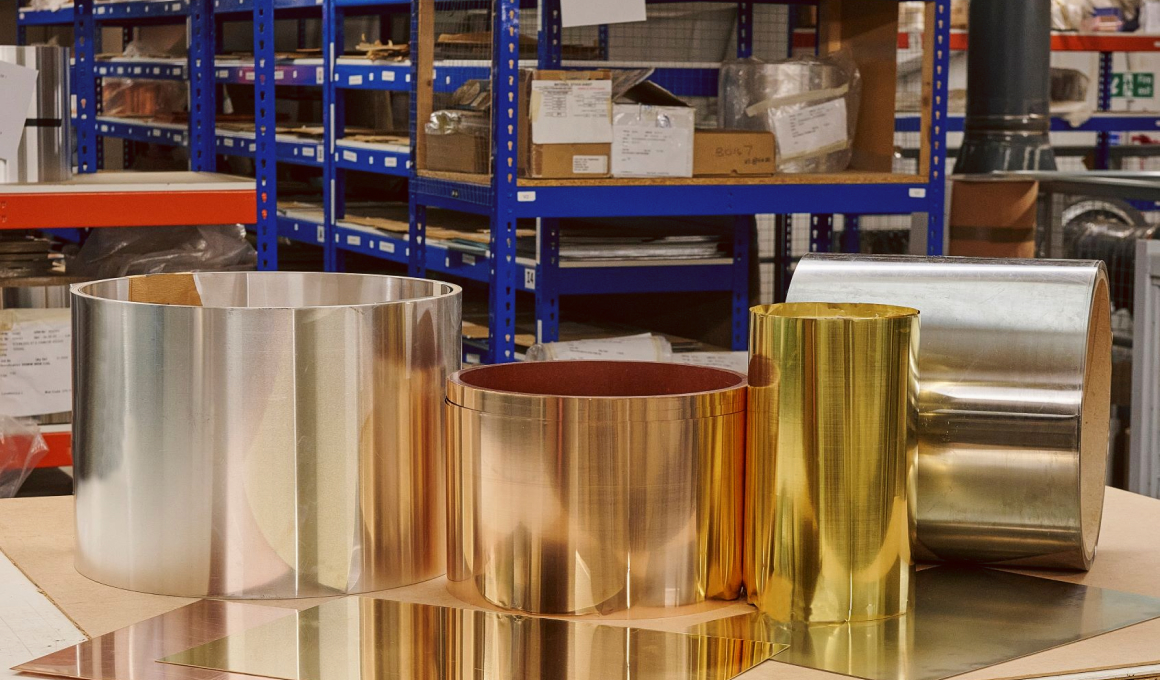 1
1
Qualitetch offer a huge range of metals for etching including: Stainless Steels, Carbon Spring Steels, Copper, Brass, Nickel Silver, Mild steel, Phosphor Bronze, Silver, Beryllium Copper, Aluminium, Nickel, Mu Metal, Alloy 42, Alloy 52 & Many Others.
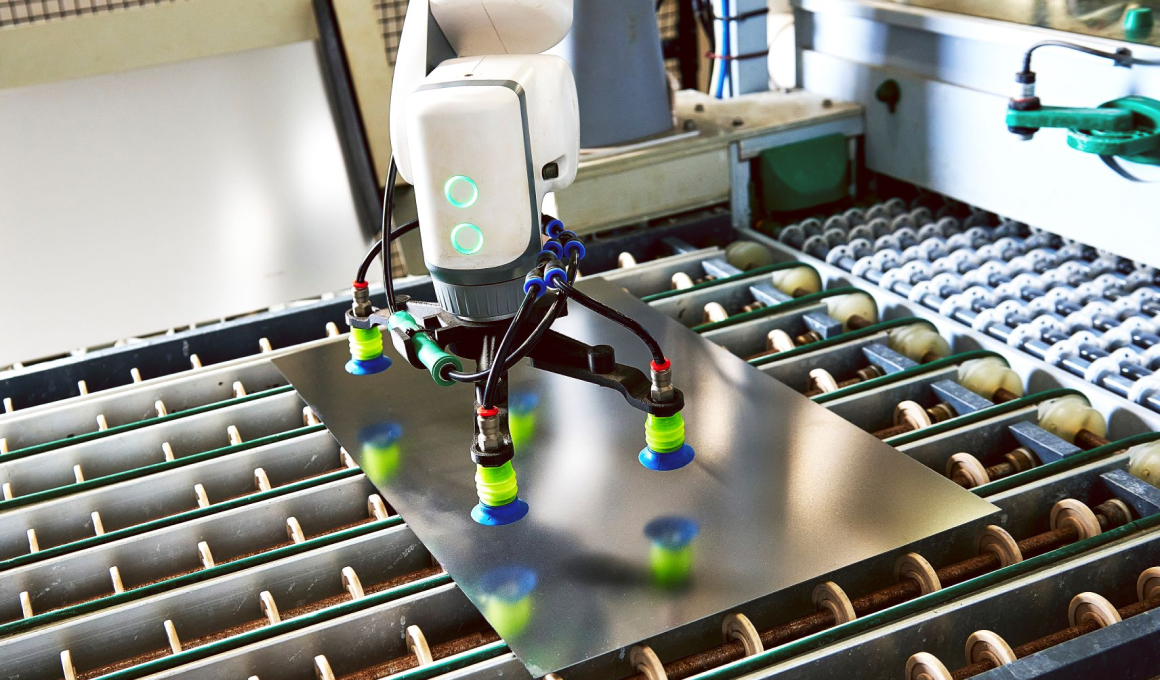 2
2
In order to ensure perfect parts every time, we need to clean the sheet metal to remove any impurities from the sheets surface before manufacturing your designs. This involves passing the metal sheets slowly through acid or alkaline solutions and rinsed prior to laminating, printing and developing.
 3
3
Metal cleaning involves passing the sheets slowly through conveyorised acid or alkaline solutions and rinsed clean prior to the lamination, printing and developing stages, depending on the sheet metal choice required.
 4
4
Once cleaned the metal sheets are coated with a UV sensitive photo resist, which melts to sheet in preparation for the printing process.
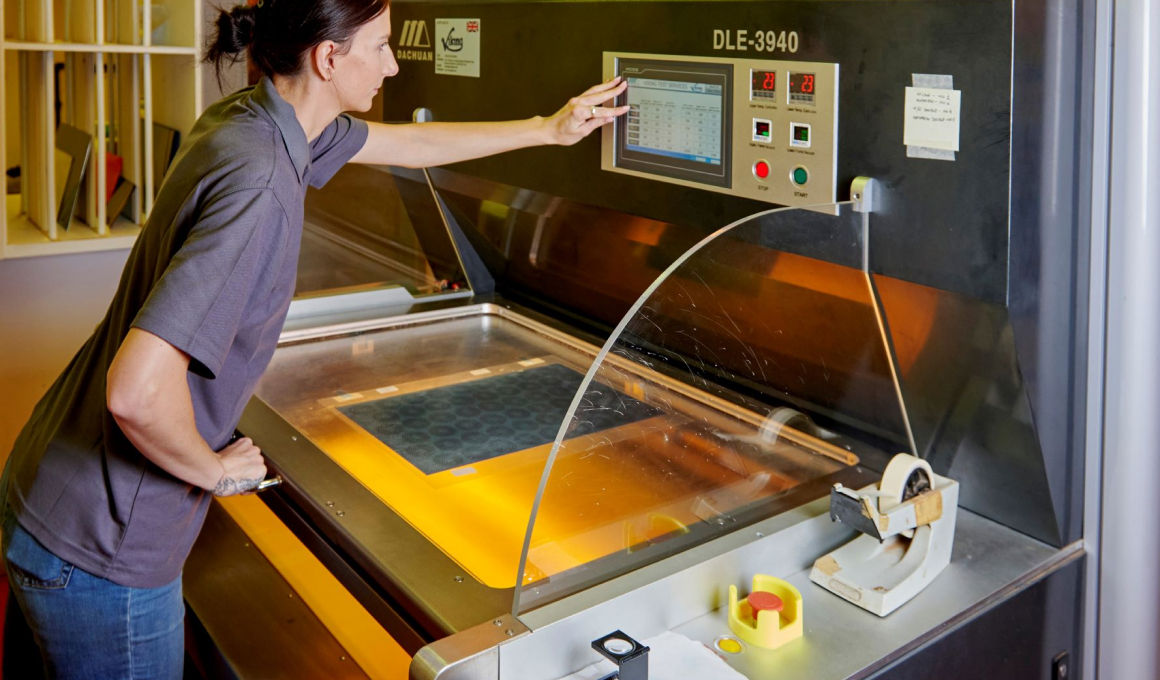 5
5
The printing process involves us taking your chosen profile design and applying it to a two sided top and bottom acetate photo film mask, that we then print your design onto the UV sensitive photo resist.
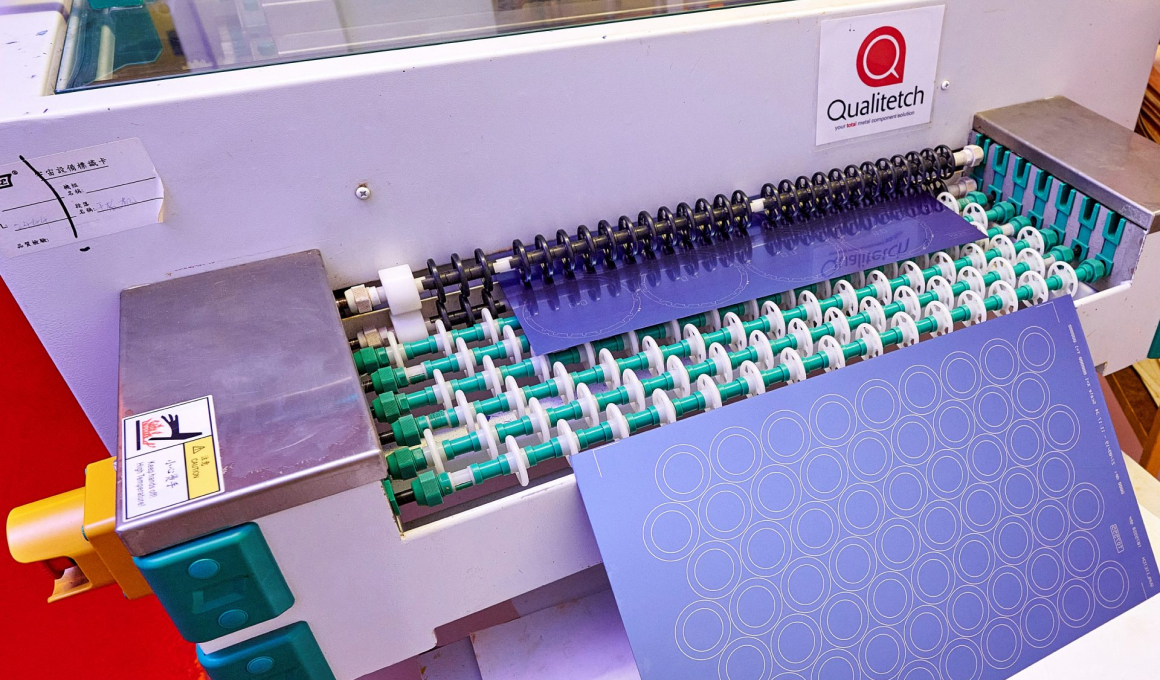 6
6
Once the metal sheet is printed with your chosen design, we then need to develop the sheet. This process effectively washes away the fine lines of the profile we are cutting, leaving raw metal track lines ready for the etching process to work it's magic very precisely.
 7
7
The etching process itself is an acid, usually ferric chloride, that effectively eats it's way through the metal at a known rate to ensure precision and targeted only in the areas you wish to remove, such as the profile track lines or other holes and features such a mesh. The rest of the sheet is masked by the UV photo sensitive blue resist, to protect the metal from the etchant until the parts are complete. This can be a very useful in a manufacturing process as the design can be very complex or include tabs or half etch fold bend lines at no added cost as you simply print your design rather than needing expensive machining time. Following an on-line dimensional check, all that is then required, is for us to strip and remove the UV photo sensitive resist coating and the parts are ready for full QA Inspection.
 8
8
At Qualitetch we offer various levels of QA inspection depending on our customers needs, as we supply both major blue chip businesses all over the world as well as smaller local businesses and anywhere in-between, as the photo etching process is very versatile. We have various automated optical equipment to ensure you parts are accurately supplied to your drawings. We also offer levels of inspection including 100% inspection, PPAP levels, batch inspection, First article inspection (FAIR) and bespoke customer inspection as required.
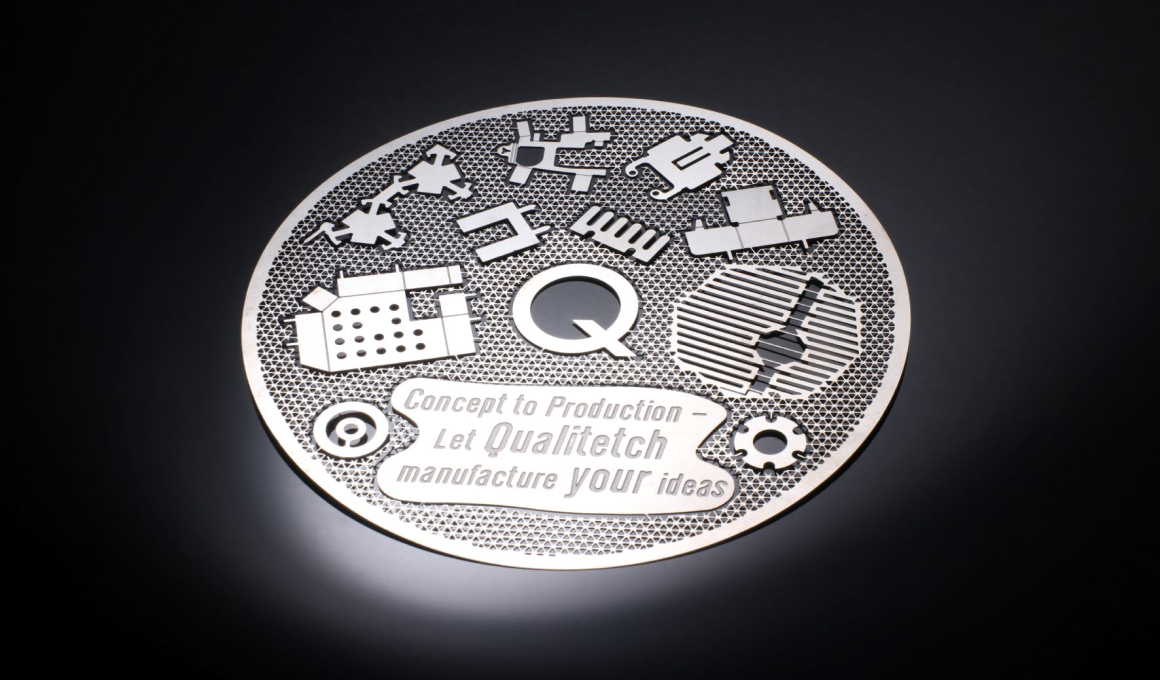 9
9
Once the parts are fully inspected and passed they are ready to be packed and sent to the customer, or for additional processes such as plating, forming, soldering, spot-welding, machining, EDM wire erosion, heat treatment or any other bespoke services required, such as assembly.
The metal is cleaned once the design has been finalised, and the sheet covered with UV sensitive photo-resist before printing. The brass is then run through a chemical bath with ferric chloride, suitable for both soft and hard metals making it a suitable etchant. Any remaining photo-resist and chemicals are removed following the etching’s completion and it is then approved by our skilled QA technicians.
We are able to offer a quick and efficient turnaround, whatever the size of demand, with a high level of accuracy and quality. If you would like more information on the photo chemical etching process of brass, please contact the team on 01354 658787.
Bipolar Plate manufacture & hydrogen fuel cells & Electrolysers through chemical etching
View the ServiceWe offer a wide range of engineering solutions and process methods to suit your project needs.
View the ServiceStainless steel photo chemical etching is one of the most common materials we etch.
View the ServiceSilver is one of the most common precious metals around the world
View the ServiceSteel is one of the most popular metal materials to use in manufacturing.
View the Service
